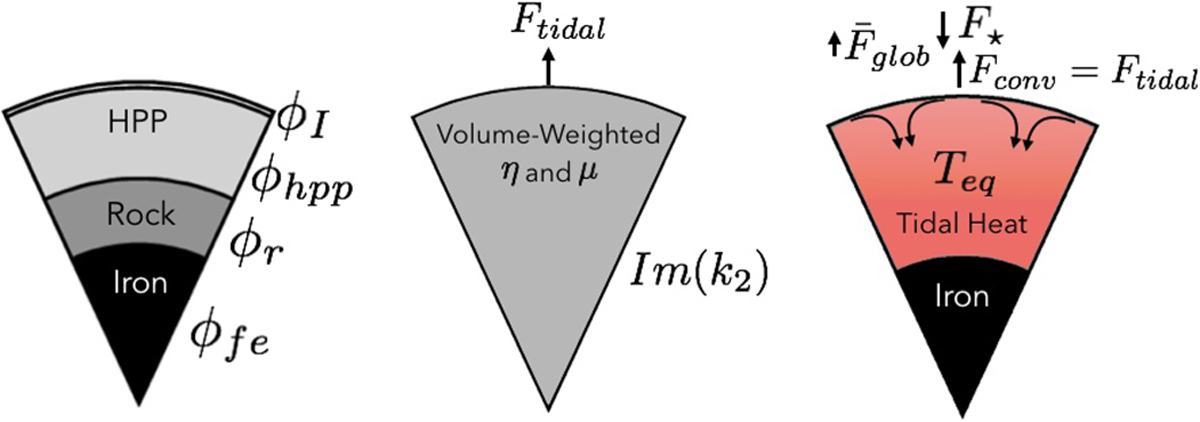Fig. 1

Schematic representation of our tidal and thermal model. Left: internal structure for the planet, composed of water ice I (white), high-pressure ice polymorphs (HPP, gray), rock (dark gray), and iron (black). The volume fractions of each constituent material were calculated based on the mean density of each planet (see Sect. 2). Middle: to calculate the response of each planet to tidal forcing, we constructed a volume-weighted average viscosity and rigidity for the planet based on the ϕ values and the rheology of each constituent material. A value of the imaginary part of the k2 Love number, and the tidal heat flux Ftidal were calculated. Right: the temperature in the planet’s interior (Teq) was governed by a balance between heat generation by tides and transport by solid-state convection; the efficiency of both processes depends sensitively on the viscosity and rigidity of the planet. The net global heat flux ![]() was calculated from the tidal heat flux and the incident sunlight from the star, F⋆.
was calculated from the tidal heat flux and the incident sunlight from the star, F⋆.
Current usage metrics show cumulative count of Article Views (full-text article views including HTML views, PDF and ePub downloads, according to the available data) and Abstracts Views on Vision4Press platform.
Data correspond to usage on the plateform after 2015. The current usage metrics is available 48-96 hours after online publication and is updated daily on week days.
Initial download of the metrics may take a while.


